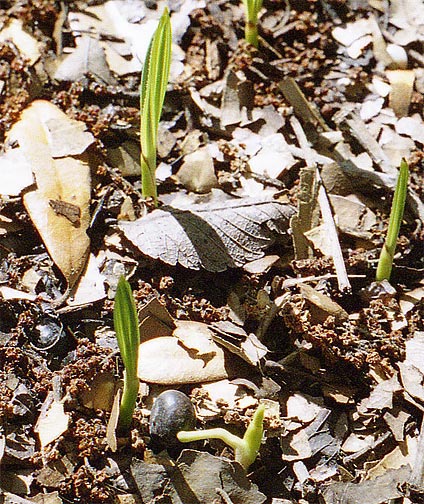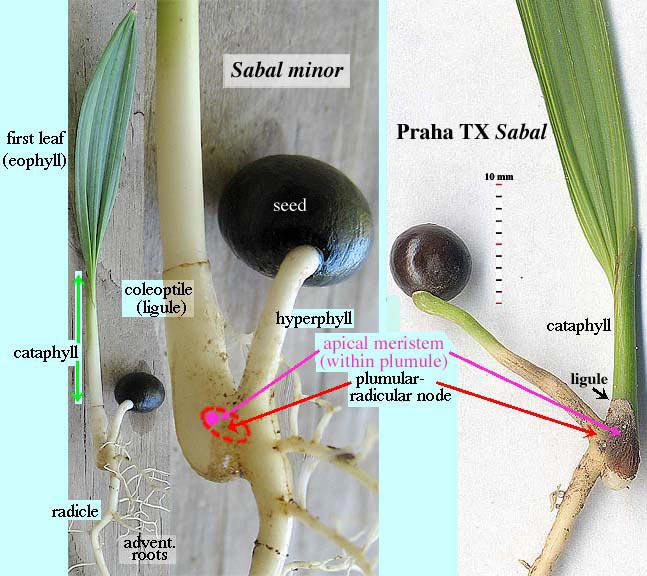
For Sabal in general, germination is characterized as (1) hypogeal — initial growth is downward, underground; and (2) remote — the plumule/radicle axis is not adjacent to the seed.
At the onset of germination the hyperphyll emerges from a circular opening at the side of the seed, the operculum, extends obliquely downward until the plumular–radicular node is formed (see below). As shown above, the radicle (primitive root) grows downward and adventitious roots are formed. The plumule produces tubular sheaths (the cataphyll, cotyledonary sheath and ligule) protecting the meristem which gives rise to the first leaf (eophyll). F. M. Henderson, "Morphology and Anatomy of Palm Seedlings" (2006), p. 287, describes this downward remote orientation for S. minor:
Hyperphyll elongate, connecting to lower part of coleoptile, forming saxophone-shaped projection below the primary root and plumule connection. [BH comment: Tomlinson's saxophone metaphor for establishment growth (see my saxophone page) seems to be misapplied here. I can't evaluate it, since the specific details of this projection are never spelled out.]
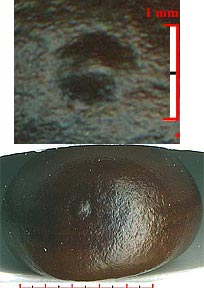 Sabal × brazoriensis seed detail; depression marking embryo position |
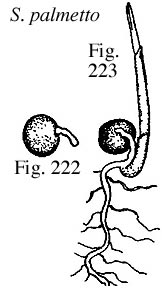 S. palmetto germination stages (from Rao 1958) |
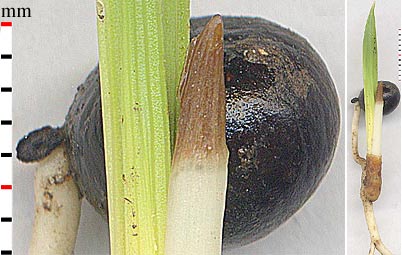 S. palmetto germination (operculum flap remains) |
|---|
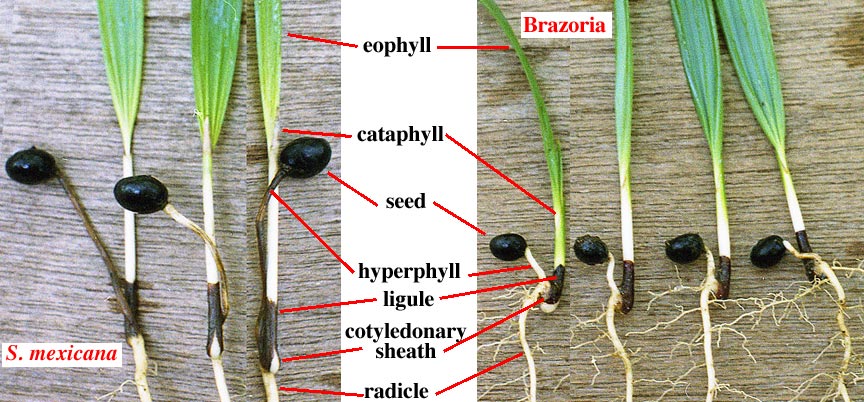
If a seed is not below the surface — over time seeds tend to rise to the surface — it may nonetheless germinate. In such relatively common instances only the radicle moves into the soil and everything else remains on the surface. In the image below the hyperphyll did not enter the soil but travelled along the surface.
